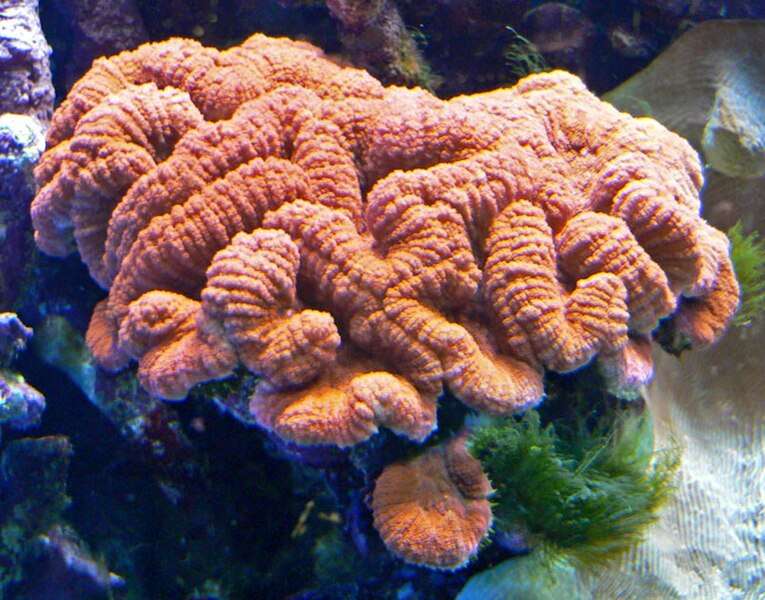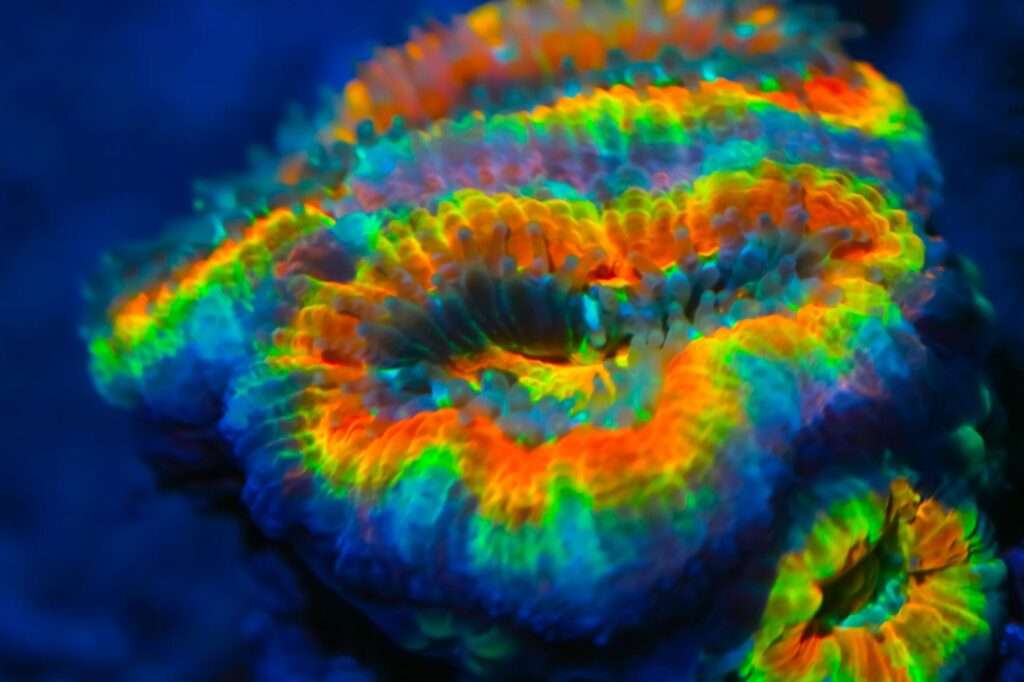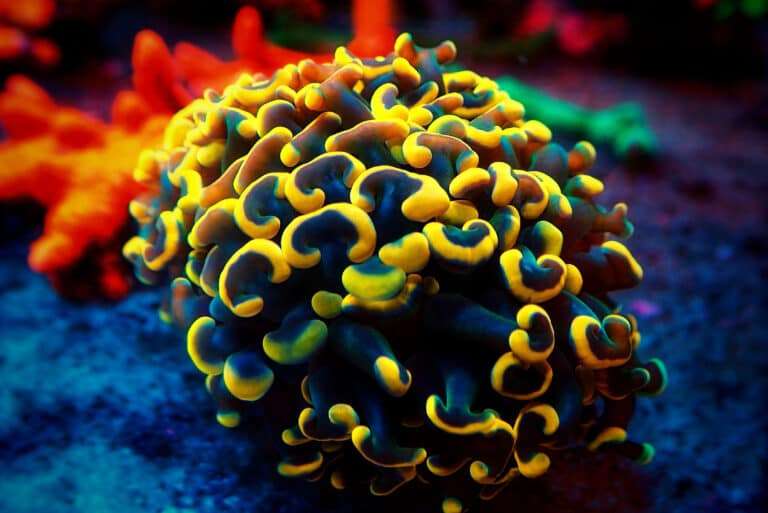
The well-liked and resilient Lobed Brain Coral, a well-liked LPS coral for beginners, is Lobophyllia hemprichii. Its various colors and textures set it apart from other Lobophyllia species. Their enormous polyps might have a smooth or bumpy surface, and they are thick and meaty. Each polyp develops curves, resembling the shape of an hourglass but frequently with a few additional curves and an open centre.
In the wild, the Lobophyllia species grow in enormous colonies that are frequently more than 15 feet (4.5 meters) across. A massive L. hemprichii colony is rather stunning. Despite being quite aggressive toward other corals, this coral’s colonies are frequent collections of different colonies of the same species. Each group will be uniquely coloured and textured, creating a tapestry of color and pattern.
Habitat
In 1830, Blainville described the Lobophyllia genus. There are nominally 22 species, of which 7 are real species, 5 of which are found in Australia. It is found in Australia’s Great Barrier Reef, the Coral Sea, and Flinders Reef, as well as further south to the Houtman Abrolhos Islands.
Although members of the Lobophyllia genus can be found in a variety of habitats, upper and fore reef slopes are where they are most frequently found. They can be found in both highly lighted and dimly lit environments, and in both vertical and horizontal orientations, despite the fact that colonies are often in more sheltered regions. They can be found in a variety of water movements at depths ranging from 10 to 115 feet (3 to 35 meters). Massive colonies of Lobophyllia can grow to a diameter of more than 15 feet (4.5 meters). They spread whitish-tipped tentacles at night to feed. Although they can live a long time in captivity, it is uncertain how long they actually live.
Morphology
Numerous colony structures can support the development of the Lobophyllia genus. In branched formations, the corallite (primary polyp) walls can rise from the colony’s skeleton like a single branch, making them tall and different from the others. The other structure is when the corallites or polyps in the colony have lengthy, meandering valleys and each has its own distinct walls. The colony, which is typically flat, and the polyp tops are usually on the same plane. Each polyp of Lobophyllia corals develops curves, resembling an hourglass form with a few more curves but without closing in the middle. The corallites or polyp walls of Lobophyllia corals are not shared with other polyps. This genus of corals can be confused with Symphyllia species. The skeletal structure of the Symphyllia corals can be used to identify them, but they also feature corallite walls that are fused or connected together rather than separated. When they are young, single polyps from the Lobophyllia genus can be mistaken for Scolymia genus. This is due to the fact that it does not initially have the polycentric (hourglass) shape, but as it develops, it does.
In Captivity

- Feeding
The Lobophyllia genus has evolved a number of feeding techniques. They get some of their nutrients from a marine alga called zooxanthellae through a symbiotic interaction. They can also take in dissolved organic substances and planktonic creatures as well as food particles from the water column. Feed once each week or as often as the coral will accept it. Feed at night when there are tentacles, though occasionally you might see them during the day and they might accept food then.
- Social Interactions and Compatibilities
Other corals are aggressively attacked by the Lobophyllia genus. Although the L. hemprichii is aggressive, they tolerate one another. Due to their aggressive character, this coral must be maintained separate from other corals. They must be positioned far enough away to prevent harm to other sessile animals because they have long sweeper tentacles that can sting.
Table





